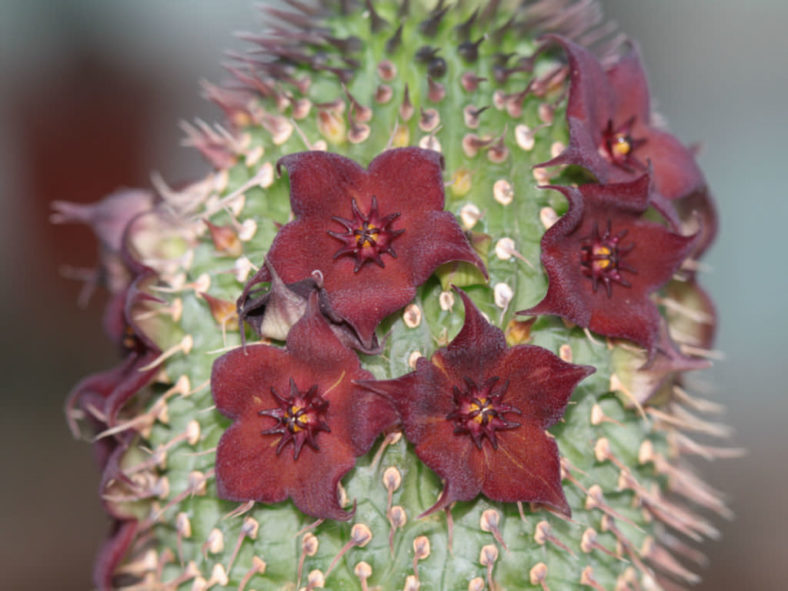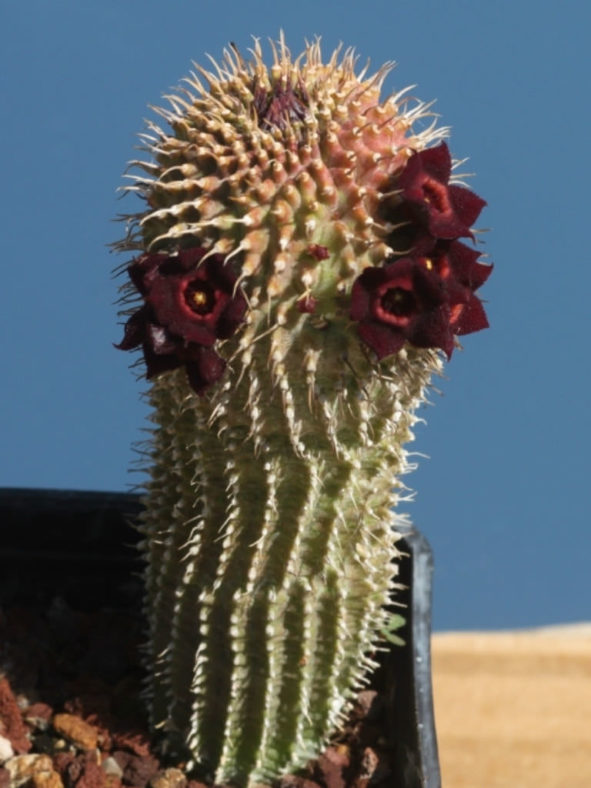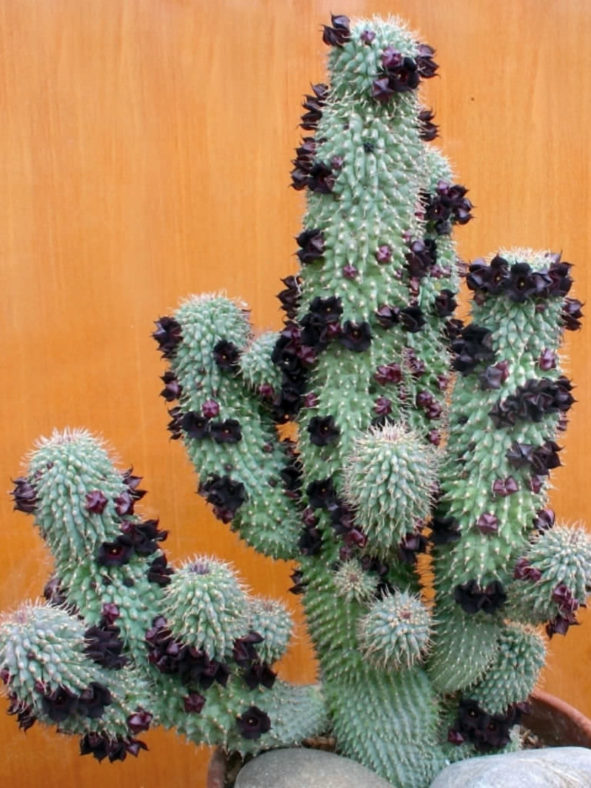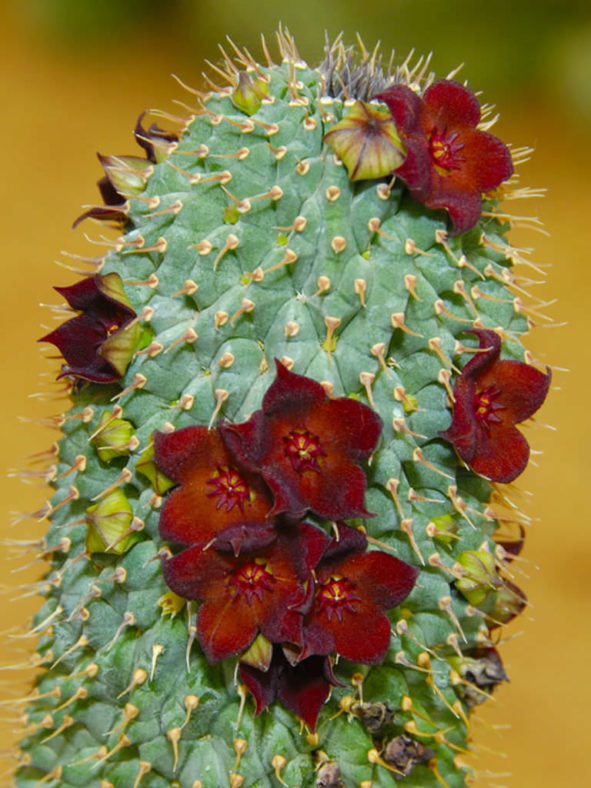Scientific Name
Hoodia pilifera (L.f.) Plowes
Synonym(s)
Stapelia pilifera, Piaranthus pilifer, Trichocaulon piliferum, Stisseria pilifera, Ceropegia pilifera
Scientific Classification
Family: Apocynaceae
Subfamily: Asclepiadoideae
Tribe: Ceropegieae
Genus: Hoodia
Etymology
The specific epithet "pilifera" (pronounced "py-LIF-er-uh") means "hair-bearing" and refers to the weak spines on the stems of this species.
Origin
Hoodia pilifera is native to South Africa (Eastern Cape, Western Cape).
Description
Hoodia pilifera is a succulent shrub with erect, greyish-green to brown-green stems with tubercles fused below the middle into 20 to 34 angles along the stem. The stems can grow up to 32 inches (80 cm) tall and 2.4 inches (6 cm) in diameter. Each tubercle is tipped with a weak, grey-to-brown spine.
The flowers are pinkish-brown, with dark purple to almost black interiors and reddish-green exteriors, and bloom in summer.

Hardiness
USDA hardiness zones 11a to 11b: from 40 °F (+4.4 °C) to 50 °F (+10 °C).
How to Grow and Care
Stapeliads are relatively easy to grow. However, they should be treated as outdoor plants as they will easily rot indoors and cannot flower without exposure to outdoor temperature fluctuations. They should be grown under cover so that watering can be controlled. Stapeliads require a reasonable amount of sunlight to promote flowering and maintain a well-shaped plant. Very shady positions will produce very poor flowering.
These plants originate from climates where they thrive in extremely high summer temperatures, resulting in most growth occurring in spring and fall, with flowering typically taking place in fall as the weather cools down. In the growing season, water it in moderation when needed, ensuring the soil is fairly dry out between waterings. Do not water between late fall and early spring.
The easiest and most effective way to propagate Stapeliads is by taking stem cuttings during the growing season. However, seeds can also be used.
Learn more at How to Grow and Care for Stapeliads.
Subspecies
Links
- Back to genus Hoodia
- Succupedia: Browse succulents by Scientific Name, Common Name, Genus, Family, USDA Hardiness Zone, Origin, or cacti by Genus
Photo Gallery
Click on a photo to see a larger version.


